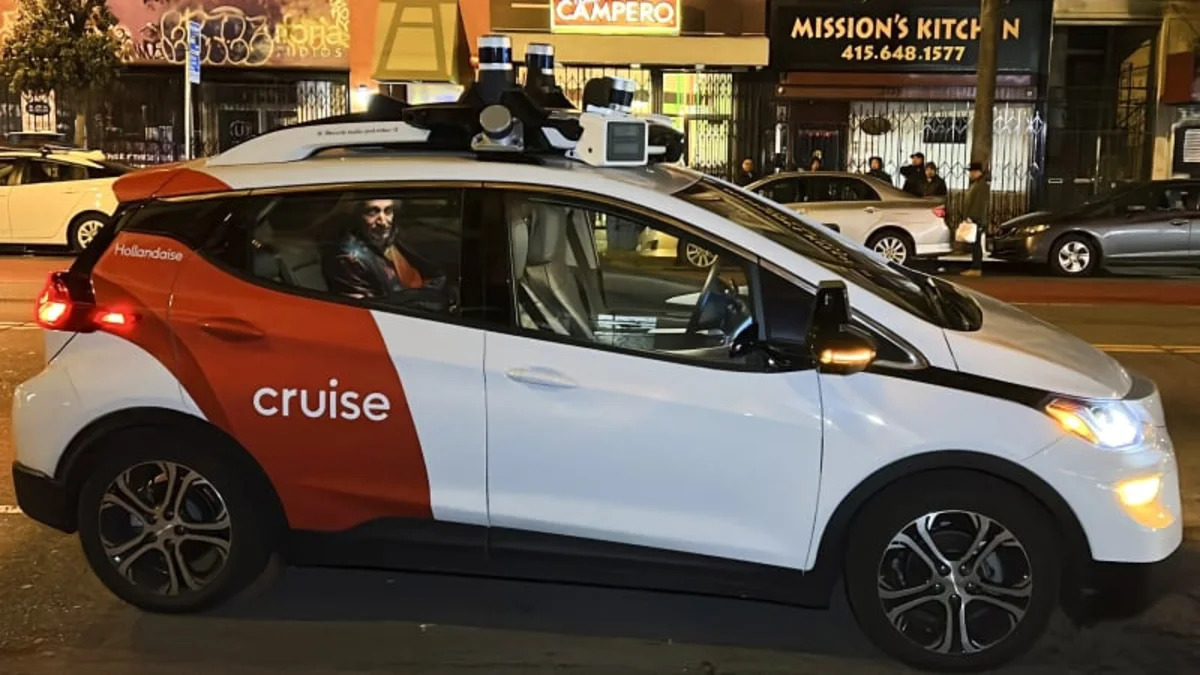General Motors Co.’s Cruise autonomous driving unit is nearing the resumption of robotaxi testing in the coming weeks, with Houston and Dallas emerging as potential locations, following the grounding of its fleet last year, according to people with knowledge of the matter.
The Cruise LLC unit is in talks with officials in several metro areas, including the two Texas cities, about resuming tests on public roads with safety drivers, said two of the people, who asked not to be identified because the deliberations are private. Before suspending operations over safety concerns in October, the company had hundreds of cars in San Francisco and smaller numbers in Austin, Houston and Phoenix.
The robotaxi company has been working to earn the public’s confidence after one of its cars struck and dragged a pedestrian in San Francisco in October, sparking allegations from regulators that Cruise withheld key footage and details of the incident. Amid the fallout, which ultimately resulted in the suspension of Cruise’s license in California, the company has dismissed a slew of top executives, laid off a quarter of its workforce and hired a new chief safety officer.
“We have not set a timeline for deployment,” Cruise spokesman Pat Morrissey said in a statement. “Our goal is to relaunch in one city with manually driven vehicles and supervised testing as soon as possible once we have taken steps to rebuild trust with regulators and the public. We are in the process of meeting with officials in select markets to gather information, share updates and rebuild trust.”
The company has been focusing its comeback plan on Texas, which has relatively liberal regulation for companies that seek to operate autonomous vehicles in the state. Cruise’s suspension in California stymies its ability to resume operations in San Francisco, where it’s based.
The efforts are particularly advanced in Houston, where Cruise is preparing to dispatch safety drivers, said another person with knowledge of the matter. The testing in that city could begin in the coming months, the person said.
The company hasn’t made a final decision yet on which city will be first. Cruise is talking to regulators and city officials to make sure the testing efforts are welcome before making its move, one of the people said.
Admitting mistakes
In the wake of its suspension in California, Cruise has attempted to take responsibility for past mistakes. Cruise hired law firm Quinn Emanuel Urquhart & Sullivan to review its governance and government relations, admitting that the company had poor leadership and took an “us versus them” mentality with regulators.
As Cruise prepares to resume testing on public roads, it has been moving slowly and deliberately, a stark contrast with its approach last year. The company had previously been working to expand its operations at a brisk clip to a dozen cities around the country, vying with Alphabet Inc.’s Waymo to build a robotaxi business. Waymo continues to operate in San Francisco and the Phoenix metro area, and is expanding in other cities.
Cruise has been conducting additional training for safety drivers to make sure that they are collecting all the data that engineers need to bolster the company’s autonomous driving technology, according to one of the people with knowledge of the situation. Cruise is also working to strengthen communication between safety drivers and engineers, which had at times broken down in the past, that person said.
Getting back on the road will be just the first move in a long ride back for the company. When the October incident occurred, Cruise was charging fares in San Francisco, Austin and Phoenix. The company was also gathering data in preparation to eventually launch in many more cities, including Atlanta, Seattle, Miami, and Raleigh, North Carolina.
Under former Chief Executive Officer Kyle Vogt, who quit in November, the company hoped to have $1 billion in revenue next year and $50 billion by 2030. That was a key piece of a goal by GM CEO Mary Barra to double total revenue to $280 billion by the end of the decade, a target that is now in peril as electric-vehicle sales growth slows and Cruise is on the sidelines.


Sign in to post
Please sign in to leave a comment.
Continue